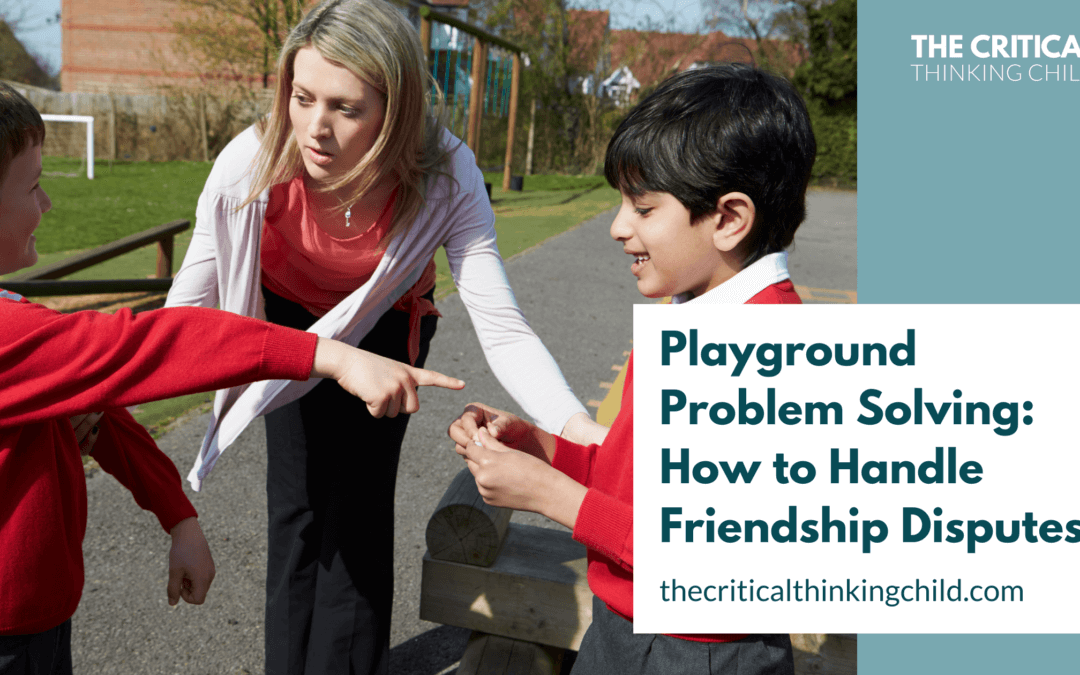For kids who have spent more than a year in lockdown, returning to regular social activities can be exciting and fun but also overwhelming. You may have noticed that your child is having more friendship disputes and playground feuds than they did before the pandemic. Conflict is a normal part of childhood, but that doesn’t make it any less unpleasant.
Common Causes of Friendship Disputes
What’s behind these friendship disputes and playground feuds? Here are some common causes
- Fairness: Children have a strong sense of justice, which means they can get frustrated easily when something doesn’t seem fair. Fairness issues can include taking turns and sharing as well as following the rules of a game. When the game is made up, rules are commonly broken, and conflict may occur.
- Inclusion: Kids are often upset when they feel that they are being left out of a game. This can happen unintentionally, with other kids not realizing that they want to play, or it can be part of a bigger pattern of exclusion.
- Breaking trust: Conflict around breaking trust happens when a child trusts a friend with a secret but then finds out that the friend has revealed it to someone else. This type of conflict is more common among older children and tweens.
How to Help
Regardless of the reason behind friendship disputes and playground feuds, these strategies can help you and your child work through conflict calmly and effectively. You can practice each of these at home in role-playing scenarios so your child knows how to react when real situations occur .
- Name the feeling (not just the problem). Helping your child name and articulate feelings can go a long way in conflict resolution and set them up for success later in life. In the case of older children, it might be useful to use a feelings wheel to… On the other hand, younger children may respond better to a question asking if they feel sad or mad because they may yet have words for other emotions. … Once they have named their feelings, remember to first validate them: Not all actions are appropriate, but ALL feelings are valid (e.g., Hitting isn’t okay, but it is okay to feel mad). Then, ask them to explain exactly what the problem was. This will not only help them be clear about what’s going on, but also help you as the adult gain enough information to help.
- Use “I” statements. “I” statements are incredibly helpful for children and adults alike because they help the listener feel less defensive and open up a dialogue for constructive problem solving. Consider teaching your child the script “When __ happened, I felt ___. Can we ___?”
- Problem solve. When everyone involved has identified their feelings, you can move onto the problem solving stage. Try to avoid going in circles around feelings and move to constructive solutions. Depending on your child’s age, they may have ideas of their own about how to solve the problem, or you may need to provide more coaching. It’s always helpful to give several suggestions and let your child and their friends make the final decision; this will empower them moving forward.
Talking Points
Consider discussing these talking points with your child to help them learn to de-escalate tense situations among friends or handle existing conflicts independently.
- “You seem upset. Are you feeling sad, frustrated, or angry?”
- “What happened on the playground? What do you think you should do to solve the problem?”
- “I would feel angry too if my friend said I cheated in a game but I didn’t. Everyone feels angry sometimes, and that’s okay. Would you like to keep playing or would you like to take a break?”
Additional Resources
Interested in learning more about helping children with conflict resolution? Two of our favorite children’s books are Enemy Pie and Mean Jean the Recess Queen. For more explicit strategies, check out We Can Work it Out: Conflict Resolution for Children.
Sources Used:
https://childmind.org/article/teaching-kids-how-to-deal-with-conflict/



